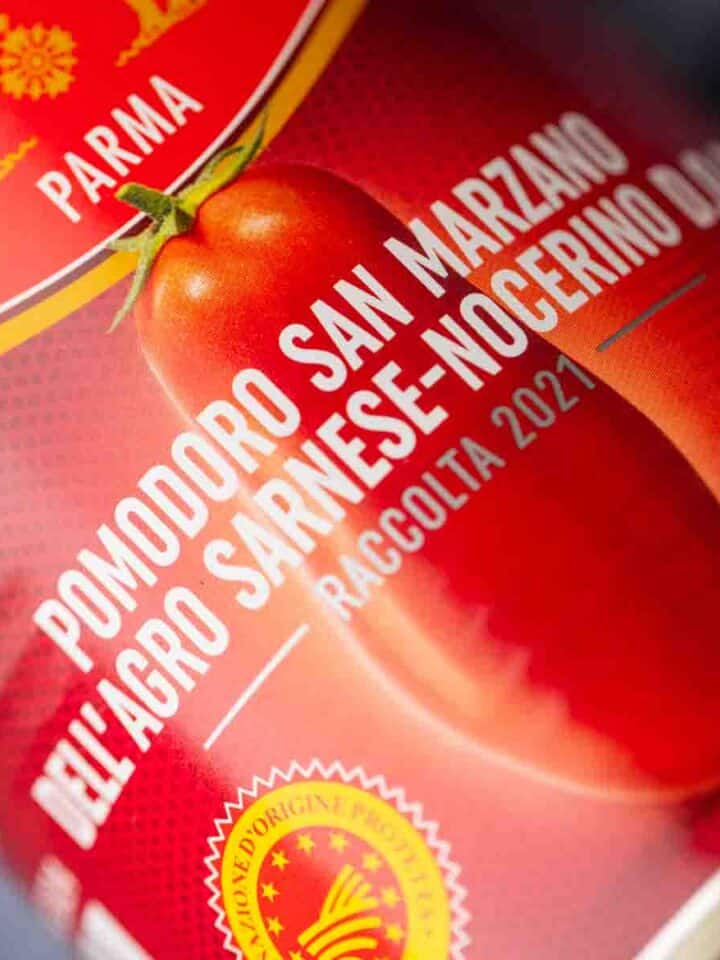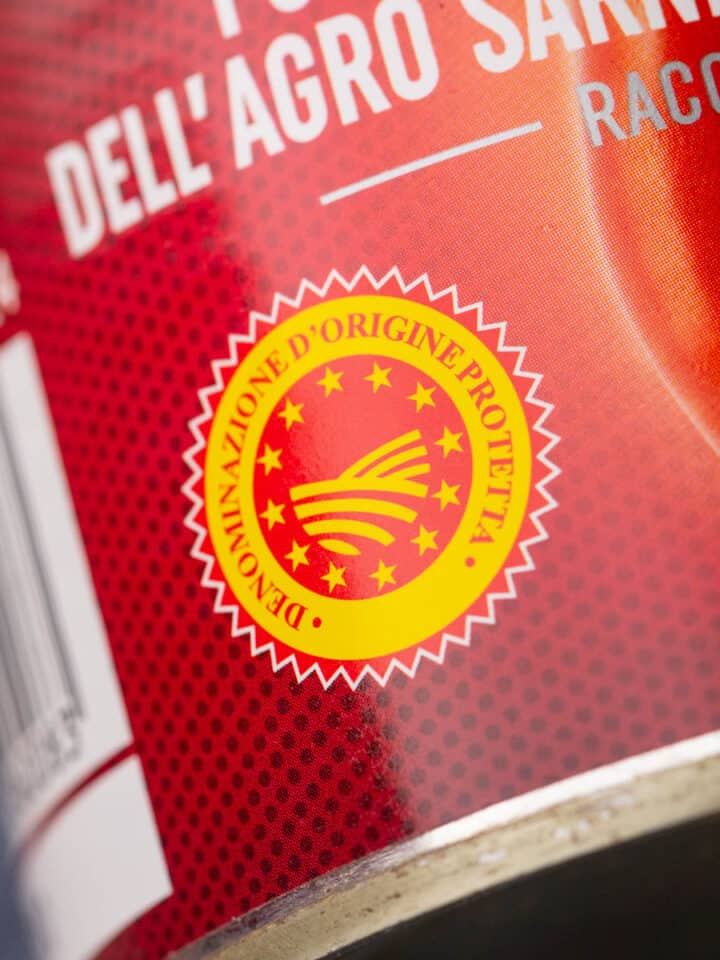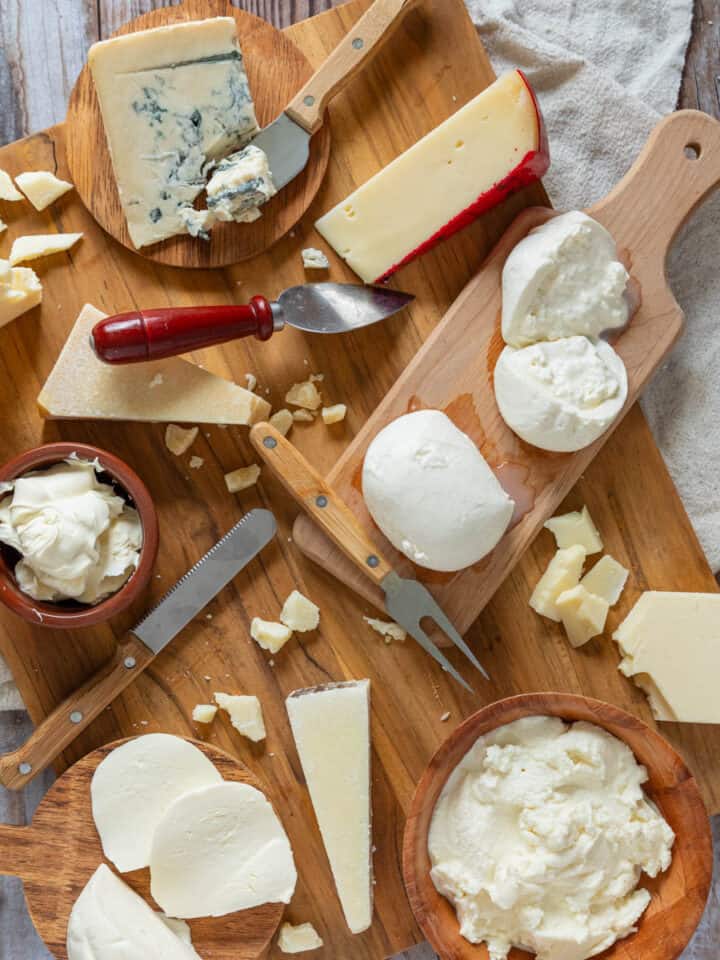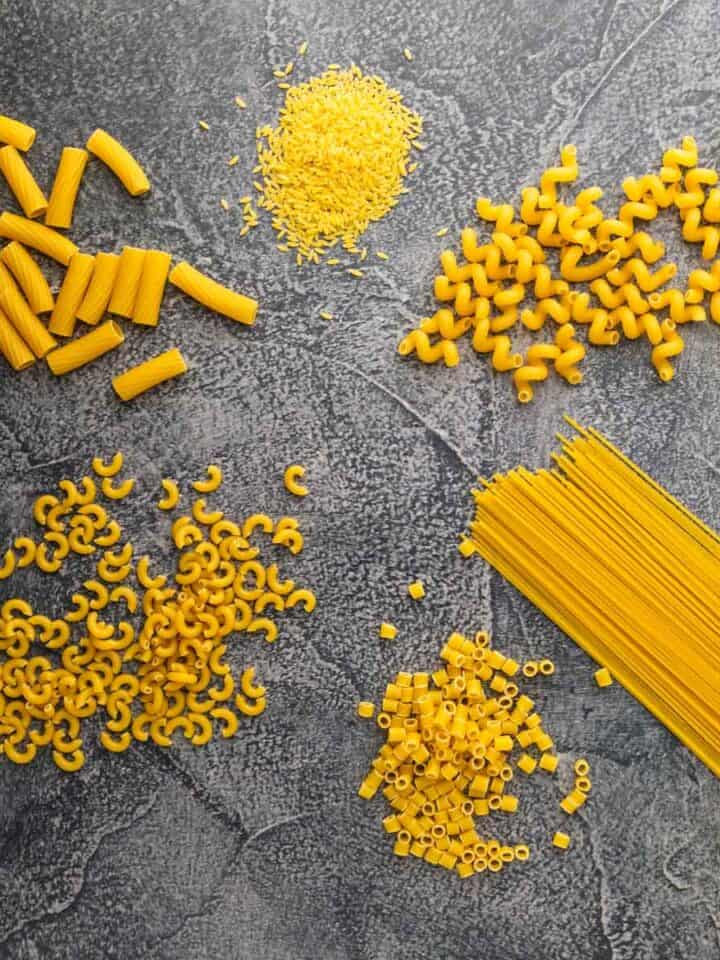Your ultimate guide to using olive oil for cooking and baking! Here are the different types of olive oil, the best ways to use them, and everything else you need to know about this kitchen staple.

Jump to:
🫒 The origin of olive oil
Olive oil is an ancient food, dating back to before 4000 BC. Its origins can be traced to Mediterranean countries, with ancient production starting in Greece and then moving to Italy, Spain, and beyond.
Over the centuries, olive oil has played a significant role in the diets and cultures of these countries. It was not only used as a food, but also for medicinal, fuel, cosmetic, and religious purposes.
The basic process of making olive oil has remained largely unchanged for centuries—olives are harvested from trees, ground into a paste, and the oil is extracted. The specifics of the production process (i.e., how the oil is extracted) determine the type and grade of the olive oil. More on that below!
👩🏻🍳 How to use olive oil
As mentioned above, olive oil has a wide variety of uses, but for the purposes of this post, we’re focusing on how it’s used for food.

Cooking
Olive oil is used for everything from sautéing and grilling to dressing salads and drizzling over dishes for that perfect finishing touch. The distinct taste of a good extra-virgin olive oil can elevate everything from pasta fagioli to pizza bianca, while the neutral flavor of refined olive oil makes it an all-purpose oil that can be used for just about any application.
Baking
Although less common than cooking, olive oil can also be used in baking. Its high monounsaturated fat content and low level of saturated fats make it a great alternative to butter and seed oils.
Olive oil adds moisture and richness to baked goods, making them more flavorful and tender. Mild flavored light olive oils are best suited for sweet or delicate desserts, while more robust extra-virgin olive oils are better for savory baked goods like bread and homemade pizza dough.
Dipping
Olive oil is an excellent dip for fresh bread, like my crusty Italian bread. This makes for a simple yet sophisticated appetizer or accompaniment to a meal.
For a flavorful dipping oil without adding anything else, extra-virgin olive oil is the preferred choice since it has a rich, complex flavor on its own. Using it for dipping bread gives you the chance to really appreciate these nuances!
To elevate the dipping experience or dress up a lesser quality oil, consider mixing it with herbs, spices, sea salt, or freshly grated Parmesan cheese.
Roasting
Olive oil is also a fantastic choice for roasting vegetables, meats, and fish. When used for roasting, olive oil not only enhances a dish’s flavor but also helps the outside become golden brown and crisp. Extra-virgin olive oil is not the best choice here, as it has a lower smoke point that can cause it to smoke in the high heat of the oven.
🛒 What to look for when buying olive oil
Although you don't have to buy the priciest bottle on the grocery store shelf, you do want to make sure you’re purchasing the best for your budget. Here’s what to look for.
Olive Oil Grades – This includes extra virgin olive oil (EVOO), virgin olive oil, and refined olive oils. We’ll discuss these in depth below.
Origin – Oils from Italy, Spain, Greece, and California can vary significantly in taste. Italian oils often have a fruity, grassy flavor, while Spanish oils might be more robust and peppery, for example.
Harvest Date – Olive oil is not wine—it does not improve with age. Freshness is key to the best taste and nutritional benefits, so look for a harvest date on the bottle. The newer, the better.
Packaging – Opt for olive oil in dark glass bottles or tins that protect it from light and oxygen, both of which can degrade the oil over time.
🫒 Types of olive oil
Now, let’s discuss the different types of olive oil and their best uses.

⭐ Extra Virgin Olive Oil
When you think of olive oil, you probably think of extra-virgin olive oil! In fact, many home cooks only use extra-virgin olive oil in their kitchens. Even though EVOO is synonymous with olive oil for many of us, it actually isn’t an all-purpose oil. You’ll save money by reserving your best EVOO for the applications where it shines.
- How it’s made: Olives are crushed into a paste, then the oil is extracted using a press or centrifuge.
- Acidity level: Less than 0.8%
- Smoke point: Between 350°F and 410°F
- Quality: EVOO is considered to be the highest quality olive oil, with intense flavors and health benefits.
- Taste: Fruity, grassy, peppery
- What it’s best for: Salads, dipping, drizzling over cooked dishes
- How to store: Keep in a cool, dark place and use within 1 year for optimal taste.
- Use it in: Italian Arugula Salad or Summer Panzanella
⭐ Virgin olive oil
Similar to EVOO, virgin olive oil is also produced through mechanical extraction without any chemical treatments. However, it may have slight imperfections in taste or aroma. It's still considered a high-quality olive oil, but it’s priced lower than extra-virgin olive oil.
- How it’s made: Similar to EVOO
- Acidity level: Between 0.8 and 2%
- Smoke point: 410°F
- Quality: Considered a high-quality olive oil, but not as high-quality as extra-virgin.
- Taste: Slightly less intense than EVOO
- What it’s best for: Cooking and baking
- How to store: Keep in a cool, dark place and use within 1 year for optimal taste.
- Use it in: Fresh Basil Pesto or Antipasto Salad (although both recipes call for EVOO, the bold flavors mean you don’t have to spring for the highest quality oil)
⭐ Refined olive oil
Refined olive oil is produced by treating lower-quality virgin olive oils with chemicals to eliminate any undesirable flavors, odors, and acidity. This results in a more neutral flavor and a higher smoke point, making it suitable for cooking methods that require high heat.
- How it’s made: Lower-quality virgin oils are refined using chemical solvents and then blended with a small amount of extra-virgin or virgin olive oil to enhance flavor.
- Acidity level: Less than 0.3%
- Smoke point: Between 390 and 470°F
- Quality: While it lacks the robust flavors of virgin and extra-virgin olive oils, refined olive oil is a versatile cooking option.
- Taste: Neutral, making it ideal for cooking without changing the flavor of the food.
- What it’s best for: High-heat cooking methods such as frying, sautéing, and baking.
- How to store: Keep in a cool, dark place and use within 1 year for best quality.
- Use it in: Roasted Artichokes or Maple Roasted Acorn Squash
⭐ Pure olive oil or regular olive oil
Pure olive oil, often labeled simply as "olive oil," is a blend of refined olive oil and virgin olive oils. This type of olive oil is a more economical option for everyday cooking, providing some of the health benefits of olive oil without the price tag of extra-virgin varieties.
- How it’s made: A combination of refined olive oil and a percentage of virgin olive oil to improve taste.
- Acidity level: Generally less than 1%
- Smoke point: Around 410°F
- Quality: Offers a balance between quality and affordability, suitable for a variety of cooking applications.
- Taste: Milder than virgin olive oils, it retains a subtle olive flavor without dominating the taste of dishes.
- What it’s best for: General cooking, frying, and sautéing where the distinct taste of extra-virgin olive oil is not necessary.
- How to store: Keep in a cool, dark place away from direct light and heat to maintain its quality over time. Use within 1 year.
- Use it in: Lemon Olive Oil Cake or Cast Iron Roast Chicken
⭐ Olive pomace oil
Olive pomace oil is the most economical grade of olive oil. It’s extracted from the pomace—the pulp, skin, and pits left over after the first pressing of olives. This oil is refined and blended with a small amount of virgin olive oil to enhance its taste and quality.
- How it’s made: Extracted using solvents from the olive pomace, then refined and often blended with a small percentage of virgin olive oil.
- Acidity level: Less than 0.3%
- Smoke point: 460°F
- Quality: Lower than virgin and extra virgin olive oils, but suitable for high-heat cooking.
- Taste: Very mild olive flavor, making it great for cooking without affecting the taste of the food.
- What it’s best for: High-heat cooking, frying, and instances where the flavor of higher-grade olive oils would be obscured.
- How to store: Keep in a cool, dark place and use within 1 year for best quality.
- Use it in: Grilled Italian Zucchini or Grilled Peaches
⭐ Light olive oil
Light olive oil is named for its light flavor and color, not its calorie or fat content! It is a refined olive oil that has been processed to remove most of the natural color, aroma, and flavor, resulting in a very mild olive oil suitable for a wide range of applications.
- How it’s made: Highly refined to remove color, aroma, and flavor, then blended with virgin olive oils for minimal taste.
- Acidity level: Very low, similar to refined olive oil.
- Smoke point: 465°F
- Quality: While it lacks the nuances and fruity notes of virgin or extra-virgin olive oils, light olive oil is highly versatile thanks to its neutral flavor.
- Taste: Very mild
- What it’s best for: Baking, frying, and stir-frying where the olive oil taste should not overpower the flavors of the dish.
- How to store: Keep in a cool, dark place and use within 1 year for best quality and freshness.
- Use it in: Seared Scallops (instead of the avocado oil) or Braised Beef Short Ribs
⭐ Flavored olive oil
Flavored olive oils are infused with herbs, spices, or fruits, providing a convenient way to introduce complex flavors to a variety of dishes. You can purchase these oils at the grocery store or specialty shops, or you can make your own infused olive oils at home.
From bright lemon-infused olive oil, perfect for dressing salads or finishing fish dishes, to the robust flavor of garlic-infused olive oil, ideal for stirring into pastas or dipping bread, there are endless options!
- How it’s made: Olive oil is infused with natural flavors from herbs, spices, or fruits. This can be done through cold infusion, where the ingredients are soaked in the oil, or through heat infusion, where the oil is gently warmed with the flavoring agents.
- Taste: Varies depending on the ingredients used for infusion. Citrus, herbs, and spices are most common.
- What it’s best for: Ideal for dressing salads, marinating meats, finishing dishes, or simply as a dipping oil.
- How to store: Keep in a cool, dark place. Use within a few months after opening to enjoy the freshest flavors.
- Use it in: A dip for Italian Focaccia or Pizza Bread
If you ever don't recognize a tool or skill that is mentioned, be sure to look it up in our Glossary of Cooking Terms and Definitions for more information.






Jacquilyne
What is the BEST virgin olive oil?
Amanda
Virgin olive oil is hard to find in the grocery store, so I usually keep pure olive oil and extra virgin olive oil stocked. Bertolli, Colavita, Carapelli or Filippo Berrio all good brands that I like.